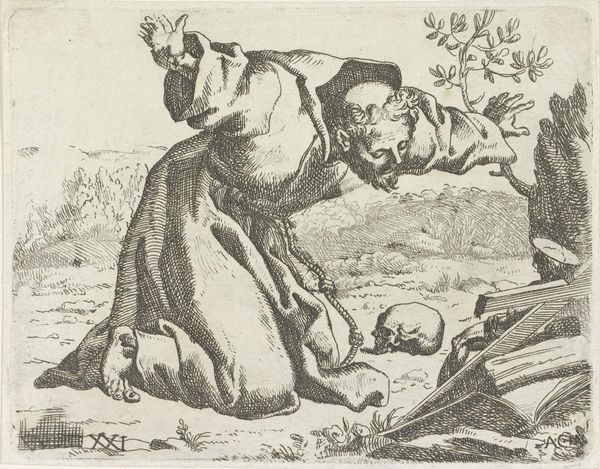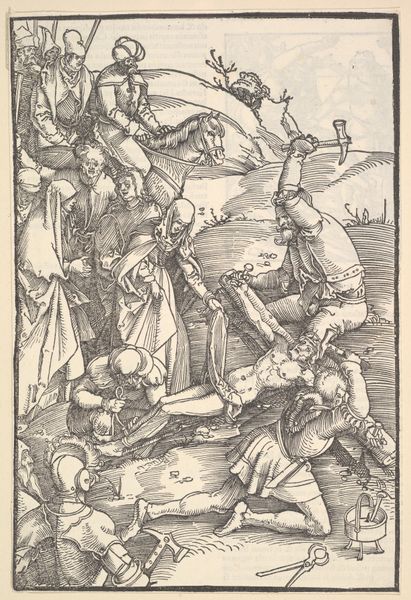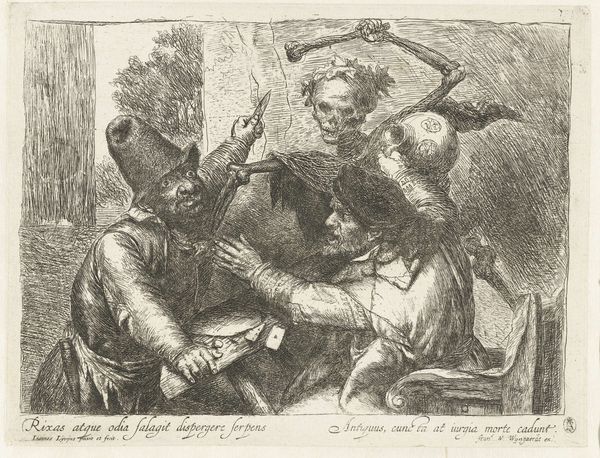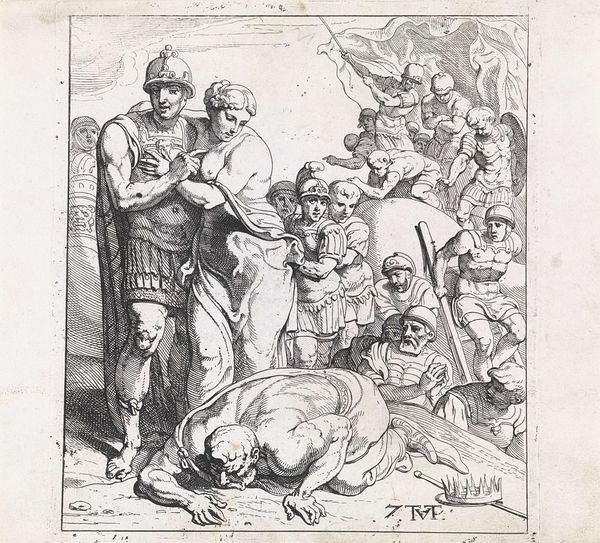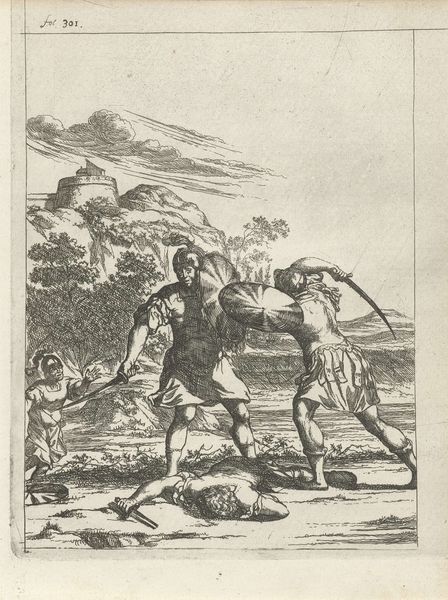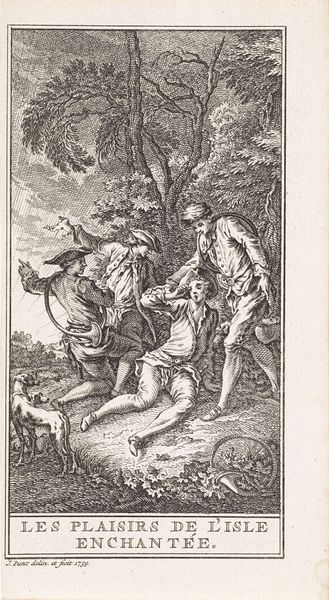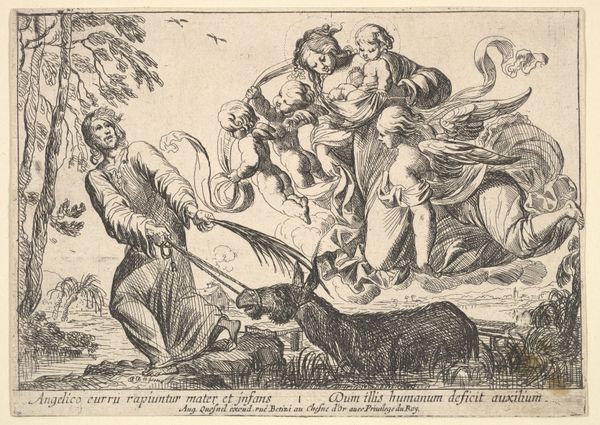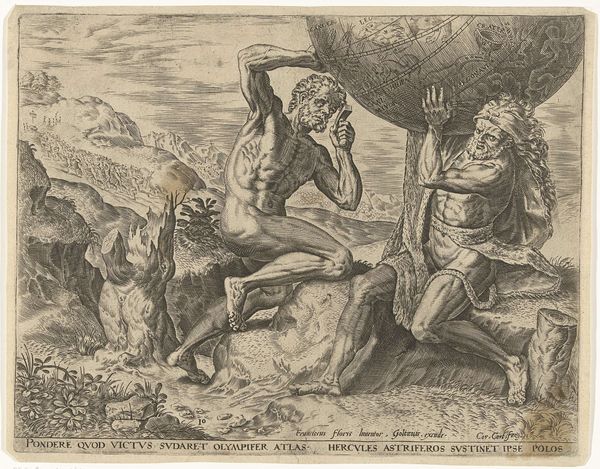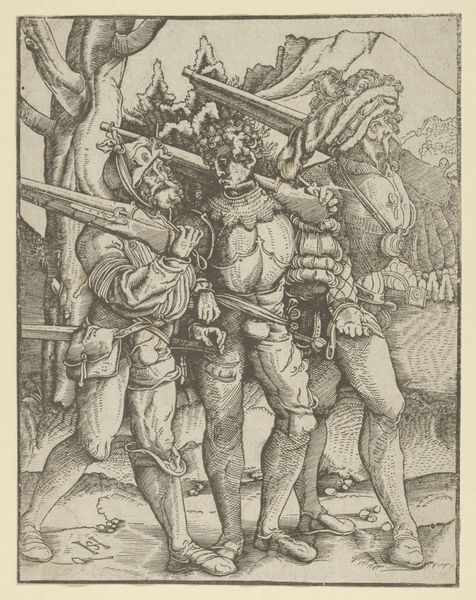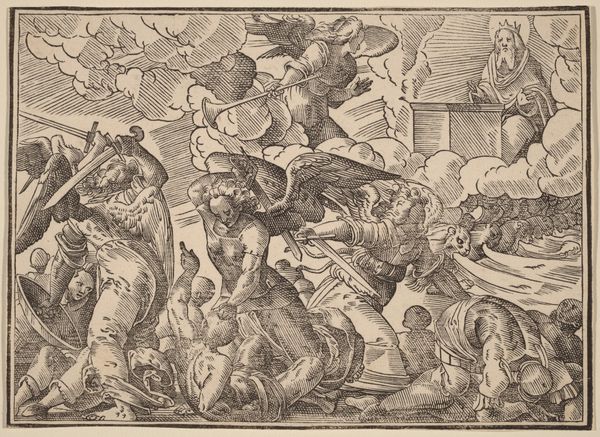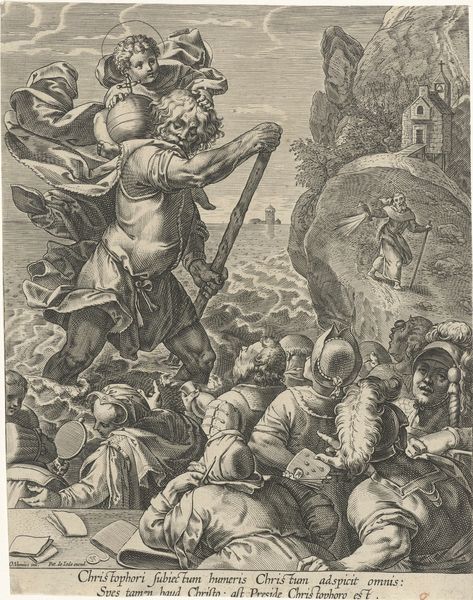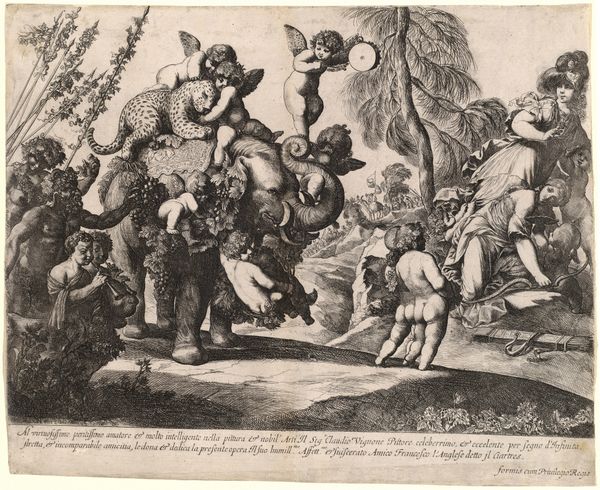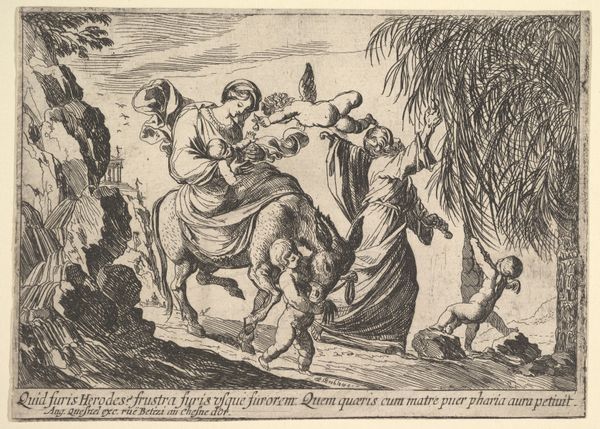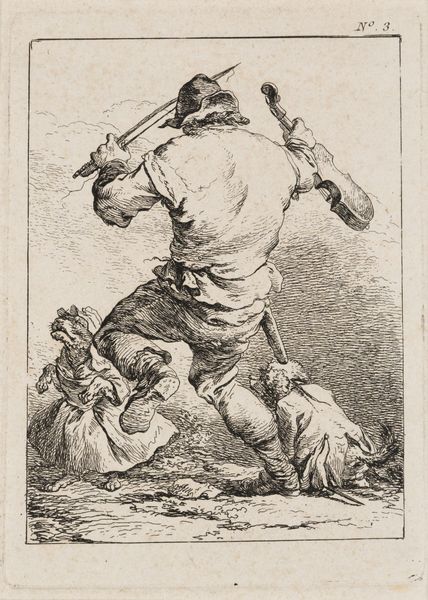
engraving
#
allegory
#
baroque
#
figuration
#
line
#
engraving
Dimensions: height 69 mm, width 94 mm
Copyright: Rijks Museum: Open Domain
Curator: Standing here at the Rijksmuseum, we have before us "Three Flying Putti with Butterfly-like Wings," an engraving created by Cornelis Schut sometime between 1618 and 1655. It’s a small piece, but impactful. Editor: My immediate reaction is a sense of dynamic movement! The composition feels almost dizzying with its swirling lines and figures in freefall. The light seems to be scattered chaotically, creating an unbalanced feel, as if something bad is happening here in the sky. Curator: It’s fascinating you say that, because the dynamism you perceive really reflects the Baroque period's flair for the dramatic and the allegorical. These putti, or cherubic figures, were common symbols, especially then. What's interesting here is to consider how their association with innocence contrasts with that potential bad outcome and instability, reflecting maybe societal upheavals or uncertainties in that time period. Editor: You're right, that is compelling! Technically speaking, Schut's use of line is what defines this piece. Look at how densely he layers them to create depth and shadow, versus the lighter, more open strokes indicating highlights. It almost gives a sculptural quality to the figures despite the medium. And the use of those dramatic diagonals, what a strong design feature. Curator: Precisely. And to expand on that a bit further, within the context of the Dutch Golden Age, the rise of printmaking made art more accessible to a wider audience. Images of cherubs often reinforced messages of love and perhaps religious morality, in homes from merchants to farmers. Considering that, these aren't just playful figures but reflections of cultural values trying to be stabilized during times of change. Editor: That historical layering certainly adds depth to my initial reaction to its frenetic energy. The form really supports and emphasizes the reading that there were things afoot back then, and anxieties that this picture seems to exemplify. Curator: Indeed, the interaction between form and socio-political context invites layered interpretation. Editor: Analyzing its structural components has helped me really see the emotional turmoil lying within this piece. Curator: Understanding how the context shaped the image helps connect this work to broader conversations around social and cultural beliefs.
Comments
No comments
Be the first to comment and join the conversation on the ultimate creative platform.
